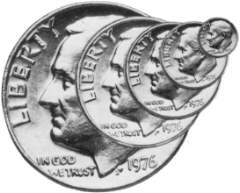

Principles of Magnification
Magnification products are an essential element in the daily activities of many individuals today. Whether the application is for commercial, professional or personal use, the magnifiers enhances one's ability to perform a task or enjoy a hobby. This information is to aid the professional or lay person in understanding how magnification works and how one can get the most out of the magnifier he or she is using. The principles of magnification apply to all magnifiers employing simple lenses or combination of lens.
Definitions:
Focal Length: The distance from the center of the lens (or lens system) to the viewed object. Working distance is the distance from the bottom of the lens, or the lens housing to the object when the object appears at maximum magnification without distortion. It is important to remember that as magnification increases, the focal length decreases.
Diopter (d): A term used to identify the refractive (light bending) capacity of a lens. In magnifiers, there is a direct correlation between focal length and diopter. To find the diopter of a magnification lens, follow these steps. With the eyes 10" above the lens, move the object to be viewed to the point the greatest distance below the lens where it remains in sharp focus. Measure this distance and divide into 1 meter (39.37"). The result is the diopter of the lens - e.g., if the object is at a 13" distance than it is a 3-diopter lens (39.37/13 = 3d). Each diopter increases the size of the viewed object by 1/4 (25%) when the object is at its full focal length from the lens.
Field of View: The distance across the lens surface to which the viewer brings both his eyes (note: eyes should be 10" above the lens). It is important to note that as magnification increases, meaning the lenses used are stronger, viewing areas and focal length decrease.
Magnification: The degree to which the viewed object is enlarged. Magnification is usually expressed by a number followed by an "x", the symbol used to express power or the size of the object in relationship to its actual size.
|
Common Diopter/Power Relationships |
|
Diopter |
Power |
% Bigger than object |
Focal Length |
|
3 |
1.75X |
75% |
13" |
|
4 |
2.00X |
100% |
10" |
|
5 |
2.25X |
125% |
8" |
|
7 |
2.75X |
175% |
5.5" |
|
8 |
3.00X |
200% |
5" |
|
9 |
3.25X |
225% |
4.5" |
|
11 |
3.75X |
275% |
3.75" |
|
13 |
4.25X |
325% |
3" |
|
16 |
5.00X |
400% |
2.5" |
|
18 |
5.50X |
450% |
2.25" |
|
20 |
6.00X |
500% |
2" |
